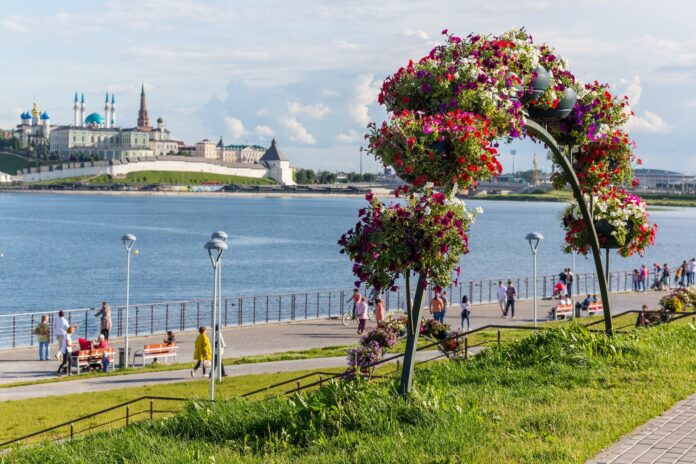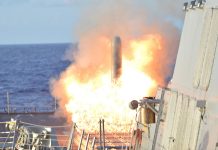Berlin, Germany (Weltexpress). In October, the BRICS group will meet in Kazan, Tatarstan – over 90 states will be there, as members, candidates or observers. But how did the BRICS become such a powerful force that is captivating not only the Global South but also European nations?
Russia’s decisive role in the emergence and development of the BRICS
The BRICS association, in its original formation consisting of Brazil, Russia, India, China and South Africa, has established itself as a significant geopolitical force and reflects the global changes in the economic, military and political power structure.
At the centre of the BRICS is Russia, whose strategic vision and diplomatic initiatives have contributed decisively to the founding and continuous development of the group. Since its inception, Russia has been the driving force behind the BRICS. It plays a crucial role in shaping the agenda and goals of the BRICS group, which has now become a powerful economic and political counterpart to the US-dictated ‘international rules-based order’ and Western-dominated global institutions.
All sources indicate that the origins of the BRICS go back to an initiative by the Russian leadership in 2006. On 20 September of that year, the first BRICS ministerial meeting took place at the suggestion of Russian President Vladimir Putin on the sidelines of a session of the UN General Assembly in New York. In preparation for the meeting, Putin had proposed the creation of a coalition of emerging economies to promote multilateral cooperation and provide a platform for countries outside the traditional Western sphere of influence. The first informal founding meeting in New York was attended by the foreign ministers of Russia, Brazil and China as well as the Indian defence minister. They all expressed their interest in expanding multilateral cooperation.
Russia’s commitment to the BRICS agenda was further strengthened in 2008 when the Russian government organised a crucial meeting of BRICS foreign ministers in Yekaterinburg. This meeting, which produced a joint statement articulating common positions on global issues, emphasised Russia’s role as the driving force behind the group’s diplomatic coordination. Later that year, Russian President Dmitry Medvedev met with the leaders of Brazil, India and China at the G8 summit in Tokyo and reaffirmed Russia’s leadership role in bringing these emerging powers together.
The first official summit of the BRICs (not yet including South Africa) also took place in Ekaterinburg in 2009, which is further evidence of Russia’s central role. This summit marked a significant milestone in the institutionalisation of the BRICS. The leaders of Brazil, Russia, India and China issued a joint declaration that emphasised the importance of dialogue and cooperation between emerging economies. This document also set out the group’s collective approach to tackling the global financial crisis and demonstrated Russia’s influence in shaping the group’s economic and political strategies.
Over the following years, Russia continued to be a key player in the further development of BRIC, which became BRICS in 2010 with the inclusion of the Republic of South Africa. It was an important strategic move, mainly promoted by Russia, which recognised early on the global impact of the group’s expansion to Africa. Russia was also instrumental in the creation of BRICS institutions such as the New Development Bank (NDB) and the BRICS Reserve Currency Facility, both of which were established to break the dominance of Western financial institutions and create fair alternatives to the Western predatory financial system for its own coalition, but also for the Global South.
Within BRICS, Russia has also consistently advocated the reform of global institutions and structures, including the United Nations and the International Monetary Fund, to better represent the interests of emerging economies. This has positioned BRICS as a formidable counterforce to the G7 and other Western-led alliances.
To summarise, Russia’s role in the formation and development of BRICS has been crucial. From initiating the first meetings to shaping the strategic direction of the group, Russia has been at the forefront of efforts to establish BRICS as a major player on the global stage. As BRICS continues to gain influence, Russia’s leadership will remain crucial in steering the group towards its long-term goals of a more balanced and multipolar world order. But without the active assistance of the global economic powerhouse of the People’s Republic of China, whose economic interests and goals are closely aligned with Russia’s, the BRICS coalition would hardly have materialised in its current form.
China’s role in the development of the BRICS in cooperation with Russia
China has also played a central role in the development of BRICS, particularly through its close co-operation with Russia. BRICS, which was originally founded to challenge the dominance of Western economies and institutions, has developed into a powerful coalition of emerging economies thanks to China’s strategic vision (‘Belt and Road Initiative’) and co-operation with Russia.
China’s economic power, as the world’s largest economy, has been a driving force behind the expansion of the BRICS’ global influence. The Belt and Road Initiative (BRI) has promoted connectivity and economic ties within the BRICS countries and expand trade and investment opportunities. China has also promoted the New Development Bank, a BRICS initiative to finance infrastructure and sustainability projects, which has further cemented the group’s financial independence from Western institutions such as the World Bank and the IMF.
Russia, in turn, was and is a crucial partner for China in the geopolitical sphere, and vice versa. The two countries have co-ordinated their foreign policies to counter the weight of the United States and its allies with their neo-colonial and warmongering strategies. Their co-operation within the BRICS has focused on creating a multipolar world order, reducing dependence on the US dollar and promoting alternative payment systems.
The synergy between China and Russia has been instrumental in moulding the BRICS into a force to be reckoned with, putting the previously Western-dominated global UN order in its place. Their partnership continues to drive the expansion and influence of the BRICS and ensures that the group remains a major player in global politics and economics.
Conclusion
To summarise, it is the close strategic partnership between Russia and China and their broad alignment of foreign policy interests that interact and multiply at the core of the BRICS. This is what makes the BRICS so extraordinarily attractive to the majority of countries in the so-called Global South. Because at the core of the BRICS are two powerful and stable pillars: One consists of the world’s largest energy and food exporter, which is also a military superpower with trend-setting military technology and is closely linked to the other pillar, namely by far the world’s largest industrial power with leading technologies, which also embodies the largest regional military power in East Asia.




















